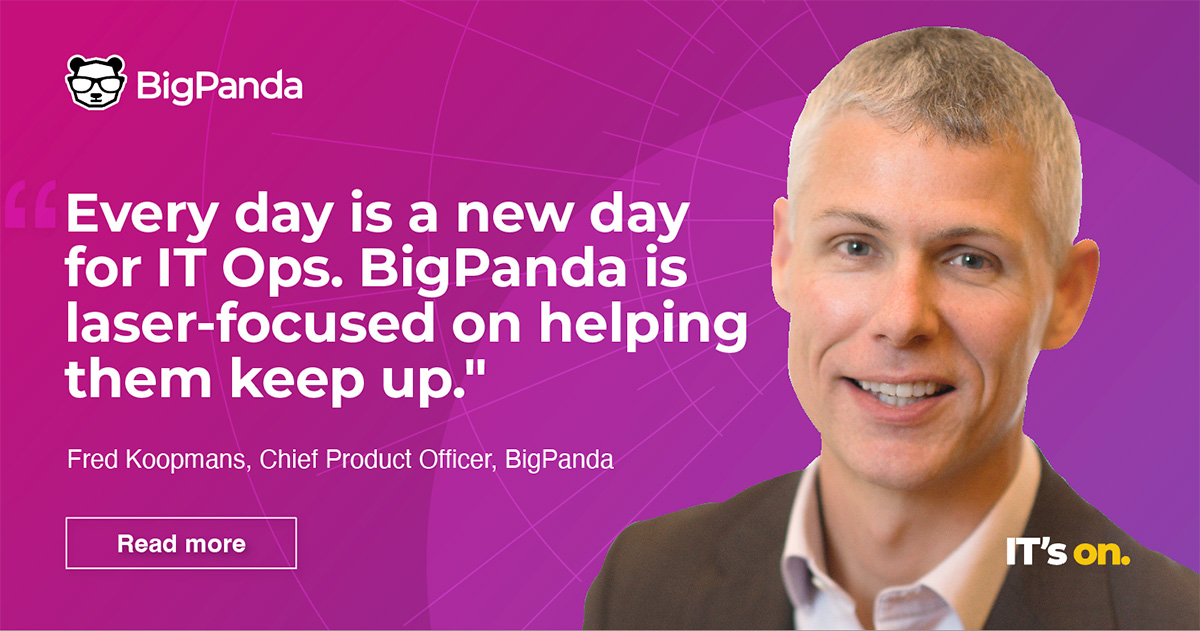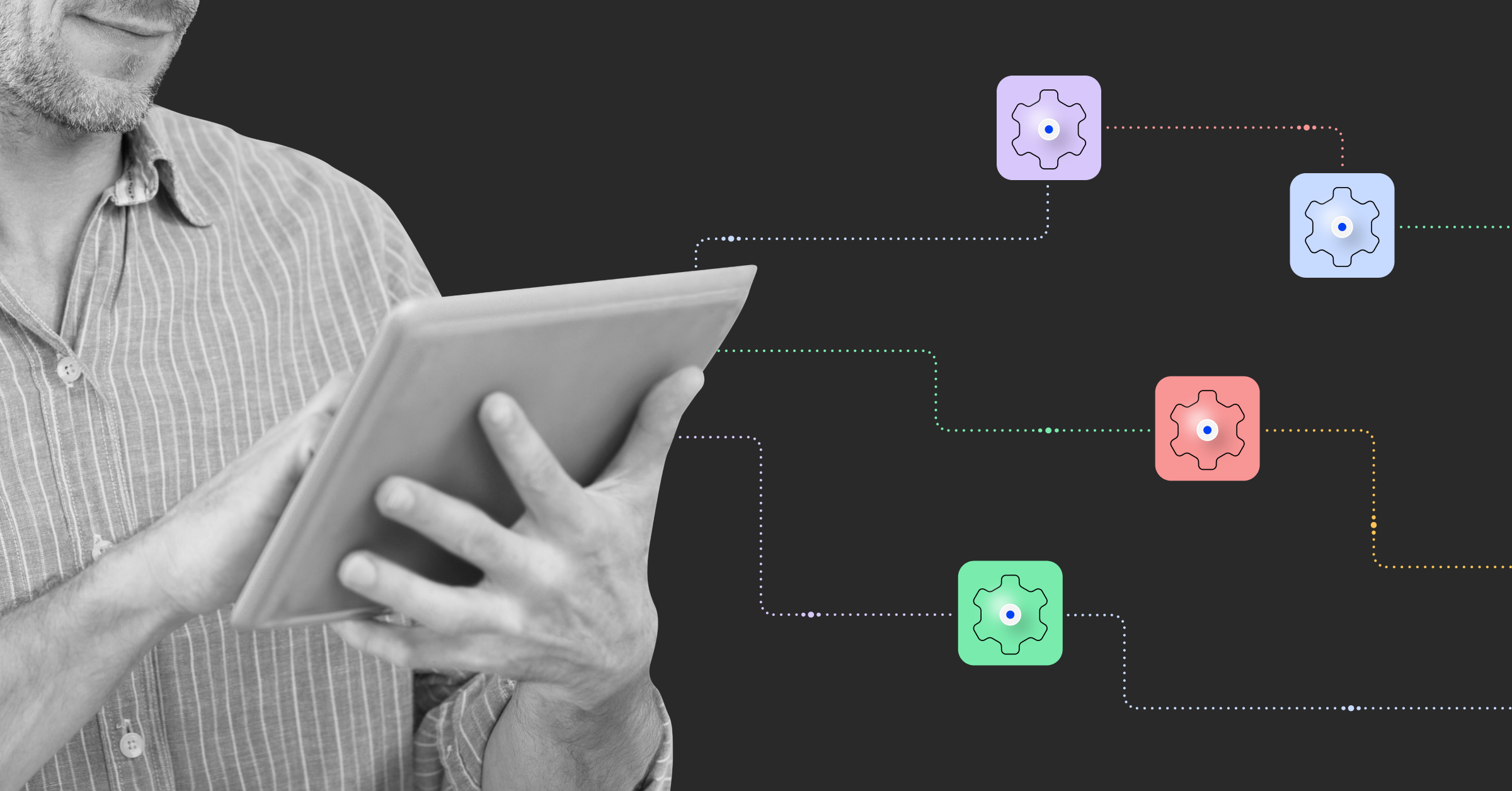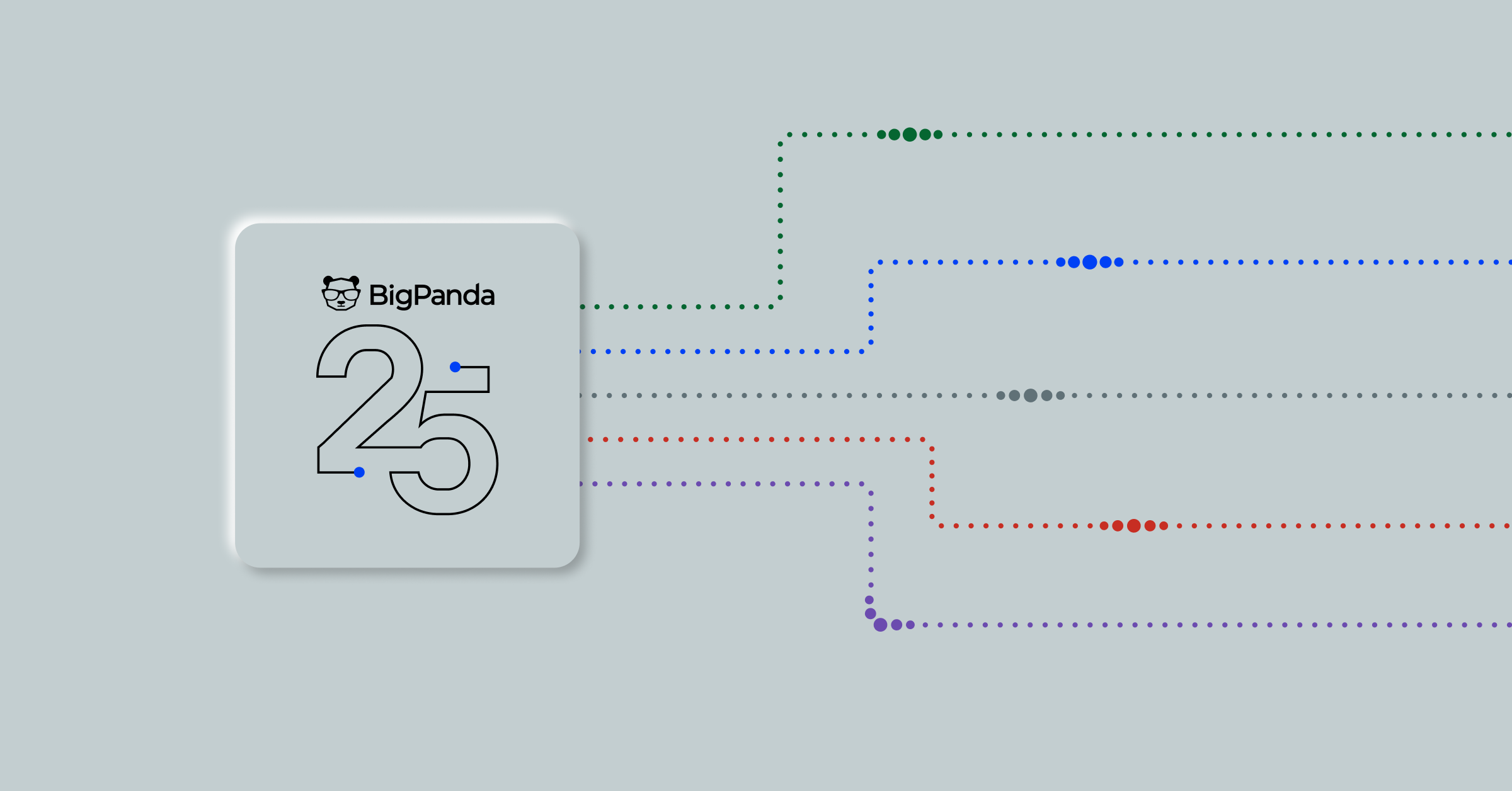Six trends overwhelming IT Ops—and what to do about them

IT Operations is experiencing lightning-fast change right now. From the emergence of cloud computing to the explosion of data—not to mention ever-present cyber threats—every day is a new day for IT Ops. At BigPanda, we’re laser-focused on making life easier for IT Ops teams, which means we’re staying on top of all this change to help IT Ops keep up.
In the wake of our recent funding news, we’re excited about all the ways we can help IT Ops in this time of disruption, even faster than before. How can IT Ops face the increasingly dynamic IT environment—flooded with more and more data every day—with confidence, security, and peace of mind? To know the answer is to acknowledge the six major industry trends impacting IT Ops teams today:
Trend #1: cloud computing
As Amazon puts it, cloud computing is on-demand delivery of IT resources with pay-as-you-go pricing. Of course, there are dozens of ways to define cloud computing, but the point is its impact on IT. It has changed computing forever in two major ways:
- Organizations have gone from on-premise data centers, typically with big systems and a few instances to one system consisting of many small instances. For example, when you move a workload to the cloud, you might move from one server to 10 servers. The impact of this is that you’re now monitoring 10 servers—not just one— for possible failures.
- The infrastructure of the cloud is not quite as durable as the on-premise one. It’s not built for durability, it’s built for scalability. This results in more failures.
Trend #2: microservices
This trend means the dismantling of large, monolithic applications and re-architecting them as loosely coupled individual services—microservices—that are more compatible, easier to maintain, and kind of living, breathing organisms. Think of this as containerization in a way. It’s next-generation virtualization technology going from a VM to a container. The impact here is that you now have 10x more things to monitor, 10x the services to keep up and running. If any one of those services goes down, the application goes down, even though it is more modular than the monolith.
Trend #3: DevOps
DevOps is a set of software development philosophies, practices, and tools that contribute to a new way of developing. That ecosystem of tools does make everything more efficient, but it also means that IT Ops teams have 10x as many tools to collaborate across and to manage.
Trend #4: CI/CD
Continuous integration and continuous delivery are software development practices that are shrinking the unit of change down as small as possible. In the CI/CD pipeline, every time somebody checks something in, it’s automatically merged into the main branch, then gets kicked off and is ready for deployment. Continuous delivery actually deploys it, and the idea is that if you’re going to break something, find out about it as soon as possible so you can go back and fix it. This useful capability means there are 10x more opportunities to break things.
Trend #5: M&A
Mergers and acquisitions affect IT Ops in two ways:
- Companies often acquire other businesses and rush to cobble together units, services, and tools so they can expedite deals. This creates challenges for IT that needs to maintain operations across unready properties.
- The level of complexity that arises from an acquisition often does not coincide with more resources to handle that complexity. IT services teams must deal with more complex environments with limited staff.
Trend #6: modernization of software development
This final, macro trend encapsulates the previous five. Cloud computing, microservices, DevOps, CI/CD, and M&A have fundamentally taken IT Ops to its knees. They’ve broken the traditional model, and it’s all wrapped up in the modernization of software development. IT Ops has not had a champion to represent them through this change. It’s been largely ignored. This is where BigPanda comes in.
How Does BigPanda Help?
Seeing this modernization and the challenges it brought with it to IT Ops teams led to BigPanda. As the order of magnitude increases—more servers, more services, more tools, etc.—it creates a massive change in a short period of time. Traditional IT Ops simply cannot keep up. BigPanda keeps digital services running with AIOps. We do that by transforming IT data into insight and action with BigPanda’s AIOps platform focused on Event Correlation and Automation.
IT data includes event streaming alerts, changes in topology, logs, all kinds of IoT data, and more. All of that is noise. It’s event storms. It’s chaos. BigPanda’s AIOps Event Correlation and Automation platform converts this data into actual incidents that have context and are actionable right now. The compression ratio from noise to actual incidents can range from 10:1 to 50:1, or even 100:1.
Then BigPanda’s AIOps platform runs an automated response. As the software produces actual incidents from noise, it starts to program the response to those incidents. It recognizes patterns and starts to automate action associated with them.
And finally, AIOps enables insight into the system at large. IT Ops can look back at a whole quarter’s worth of incidents and see what types occurred, where there might be gaps in the system, and where they can make optimizations. This unified analytics helps provide insight into how the entire system is performing.
The Future Is Here – You Don’t Have Two or Three Years to Wait for AIOps
AIOps is perfectly fitted for IT Ops. AI and ML change the manual, fragmented ways of handling incidents to a central, intelligent, automated system that scales beyond human capabilities. BigPanda’s born-in-the-cloud nascence, and the focus on Event Correlation and Automation, are two of its most important differentiators and reasons it will see success over other AIOps’ offerings. Even though most business leaders haven’t even heard of the term AIOps before, BigPanda has brought it to market in its fully mature form, and it’s only a matter of time before AIOps is in our household lexicon.
As organizations continue to move to the cloud and digitize every service, they increase their trajectory toward their IT Ops breaking point. Don’t wait for that point to consider the new way.




